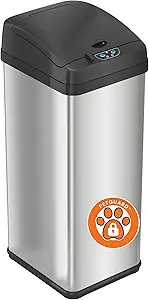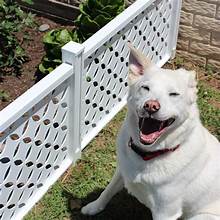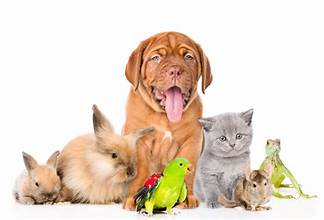Creating a pet-friendly environment is essential for the safety, comfort, and well-being of your furry, scaly, or feathered companions. If you have a cat, dog, bird, or reptile, adjusting your living space ensures they thrive in a healthy and safe environment.
Why a Pet-Friendly Home Matters:
It’s not just about safety and comfort; it’s about creating a joyful environment for your pets. Making your home safe for your pets helps prevent accidents and provides a welcoming atmosphere that promotes good behavior and reduces animal stress. Creating a pet-friendly home environment can also enhance your bond with your pet and ensure their emotional and physical well-being.
Pet-Proofing Your Home
Before bringing a pet into your home, take these essential steps to pet-proof your living space:
1. Remove Hazardous Items:
Pets can quickly get into dangerous household items such as chemicals, plants, and small objects. Keep cleaning supplies, medications, and sharp objects stored away. Toxic plants such as lilies (dangerous for cats) should be replaced with pet-safe alternatives.
2. Secure Electrical Cords:
Puppies, kittens, and even small animals like rabbits and ferrets love to chew. Keep electrical cords out of reach or use cord protectors to prevent accidents.
3. Keep Trash Cans Covered:

Pets love exploring trash cans containing harmful items such as chicken bones, wrappers, and chemicals. Invest in a pet-proof trash can.
4. Install Safety Gates:
If you have young pets or smaller animals, consider installing safety gates to block off restricted areas like the kitchen or stairs.
Create a Dedicated Space for Your Pet:
It’s a proud moment when you provide a dedicated space for your pet, a space that’s all theirs. Every pet needs its own space to feel comfortable. A dedicated space helps create boundaries and provides your pet with a retreat when it needs alone time.
1. For Dogs and Cats:
Put a cozy bed in a quiet place in your home so your pet can relax. Consider placing their food and water bowls nearby. Cats especially appreciate vertical spaces such as cat trees or window perches.
2. For Birds:
Birds thrive in areas with plenty of light but are protected from drafts. Make sure their cage is large enough for stretching and playing. Adding toys and perches can keep them entertained.
3. For Small Animals:
If you have a small pet like a hamster, guinea pig, or chinchilla, ensure its habitat is quiet and low-traffic. Provide hiding places, bedding, and appropriate enrichment toys.
4. For Reptiles:
Ensure your reptile has a suitable tank with temperature controls, UV lighting, and safe hiding spots. A well-maintained terrarium is essential for their health.
Pet-Friendly Furniture and Flooring
Pets can be harsh on furniture and floors, but with the right choices, you can maintain a beautiful home while accommodating your furry friend’s needs.
1. Furniture:
Look for pet-friendly fabrics like microfiber or leather, which are easier to clean and less likely to retain pet hair. Avoid delicate materials that are prone to scratching.
2. Flooring:
Hard flooring, such as tile or hardwood, is often better for pets, as cleaning up accidents or spills is easier. If you prefer carpets, choose low-pile varieties that are easier to vacuum and clean.
3. Rugs:
Choose rugs that are machine-washable and resistant to stains. Place nonslip rugs to prevent injuries, especially for senior pets.
Pet-Friendly Outdoor Spaces
Making your backyard a pet-friendly outdoor area will give your pets a safe place to explore and exercise.
1. Fencing:
Ensure your yard is securely fenced to prevent your pet from wandering off or entering any hazards. Small pets might need special enclosures to keep them safe from predators.

2. Plants:
Check out the plants in your yard and be aware of what is growing. Some common plants, such as azaleas, daffodils, and sago palms, are toxic to pets. Keep only pet-safe plants like rosemary, basil, and marigolds.
3. Water Features:
If you have a pool or water feature, ensure your pet can’t get to it. Not all pets are natural swimmers and may be at risk of drowning.
Stimulation for Your Pets
Mental and physical exercise are both very important for pets. To keep them entertained, give them toys, puzzles, and challenges.
1. Dogs:
To stimulate your dog mentally, rotate different chew, puzzle, and fetch games. For added fun, you can also create DIY obstacle courses.
2. Cats:
Cats love interactive toys like laser pointers and feather wands. Their instinct to stretch and scratch requires scratching posts.
3. Small Pets and Birds:
Tunnels, chew toys, and climbing structures are great for birds’ cages, and swings and mirrors can also be helpful.
Final Thoughts for a Pet-Friendly Home
Keep Food and Water Accessible:
Always ensure your pet has easy access to clean water and food in a safe location.
Regular Cleaning:
A clean home is essential for pet health. Vacuum regularly, clean litter boxes or cages frequently, and wash bedding to prevent odors and bacteria build-up.
Pet Safety:
Be mindful of small toys or strings your pet might swallow. Keep them out of reach to avoid accidents.
Conclusion:
Creating a pet-friendly home environment ensures your beloved companions live happily and safely. By pet-proofing your space, offering dedicated areas, and providing mental enrichment, you can build a home that caters to your needs and theirs. Whether you welcome a new puppy or prepare your space for a bird or reptile, these tips will help create a harmonious, pet-friendly environment.
By optimizing your home for your pets’ safety, comfort, and enrichment, you improve their lives and yours. A happy pet equals a happy home!




